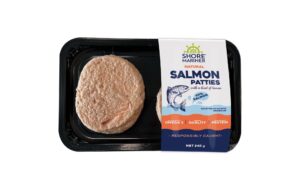From a seared wild salmon fillet to shrimp tossed in a stir fry, frozen seafood works just as well as its fresh counterpart. Here are some tips and tricks to help you maximise this versatile option.
Frozen seafood is a win for sustainability: It reduces waste and allows fish to be frozen at their peak of freshness. It’sIt’s also convenient and less reliant on seasonal supply chains.
Quality
 Frozen seafood has been around since Clarence Birdseye invented the process of freezing haddock in the 1920s. While many consumers continue to value fresh over frozen, recent studies show that frozen seafood can often be as good as, or even better than, fresh. This is particularly true if you choose a high-quality frozen product that has been adequately frozen and thawed.
Frozen seafood has been around since Clarence Birdseye invented the process of freezing haddock in the 1920s. While many consumers continue to value fresh over frozen, recent studies show that frozen seafood can often be as good as, or even better than, fresh. This is particularly true if you choose a high-quality frozen product that has been adequately frozen and thawed.
Failing to thaw seafood properly can result in freezer burn (bleached spots, papery or cottony texture) and dehydration that causes loss of flavour. The best way to ensure quality is to buy fish from a trusted source with rigorous harvesting, processing and packaging standards. The best brands have a HACCP (Hazard Analysis and Critical Control Point) program that scientifically analyses each step to prevent food safety issues, such as microbiological and physical contamination.
It’s also essential to understand that “fresh” seafood is not always as fresh as it claims. Unless it’s labelled as such, there’s a good chance that the seafood you’re buying at your local grocery store has been frozen at some point in its journey. If frozen at some point, it will be labelled as “refreshed” or ” previously frozen.” This practice is common and often necessary due to factors such as fishing seasons and the amount of time between capture and consumption.
Many dietitians recommend frozen seafood for people who don’t live near a fresh fish market and can’t easily access locally caught fish because it allows them to have a reliable source of quality seafood throughout the year. In blind taste tests, many consumers have chosen frozen seafood over fresh seafood, indicating that it is just as delicious as, or in some cases, even better than, its new counterpart.
As a bonus, choosing frozen seafood can help to reduce the Earth’s carbon footprint. Much seafood must be flown to the supermarket to maintain its freshness, increasing greenhouse gases and other environmental pollutants. Many frozen products come from the same places as fresh seafood, but because it’s are being stored at such low temperatures, it doesn’t need to be refrigerated.
Freshness
It’s no secret that frozen seafood is an excellent alternative to fresh, but many people still have misconceptions about how good it tastes and how healthy it is. Let’sLet’s bust some myths about frozen seafood so you can enjoy it confidently.
Frozen Seafood Tastes Just as Good as Fresh
Regarding quality, most frozen seafood has the same flavour and texture as freshly caught fish. This is because most seafood is flash-frozen immediately after being caught, ensuring the product stays as fresh as possible. Flash freezing prevents large ice crystals from forming, which can cause the seafood to lose its natural moisture and flavour.
Additionally, seafood that is not frozen can quickly spoil and become rotten in the time between harvesting and reaching your local seafood counter. In fact, according to a recent report from the Johns Hopkins Center for a Livable Future, up to 16% of edible seafood is discarded during the supply chain. This waste is a waste of money for consumers and precious resources.
If you prefer fresh seafood, ensure the fish is firm and does not smell fishy. Avoid seafood with open or torn packages, which may indicate exposure to warm temperatures during storage or transport. Also, look for shellfish with clear and closed shells, and test crab or lobster legs by tapping them gently on the side of a countertop. If they do not close and move quickly, they are dead and should be avoided.
In addition, fresh seafood should be kept in a clean, cold refrigerator and used within two days of purchase. Keep your seafood in a sealed plastic bag or wrapped in moisture-proof paper and keep it away from raw meats to avoid cross-contamination.
Many consumers reject non-frozen seafood because they believe it will not taste as good as fresher fish, but this is untrue. If it is handled properly after harvest, during processing and at home, frozen seafood can equal (and sometimes surpass) the quality of fresh fish. Frozen seafood is more sustainable than new, as it reduces food waste and energy use in the supply chain.
Cooking
While fresh seafood from the dock is always a treat, many restaurants use frozen seafood because it provides more consistency and is just as delicious. Frozen seafood is a significant win for sustainability since it decreases waste and allows fish to be enjoyed year-round. However, not all frozen seafood is created equal, and the quality of your final dish depends on how well you cook it.